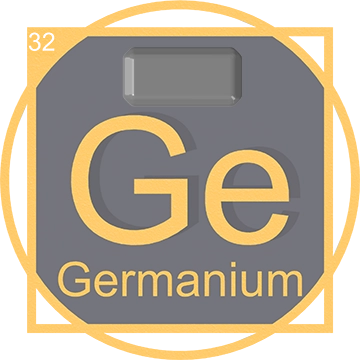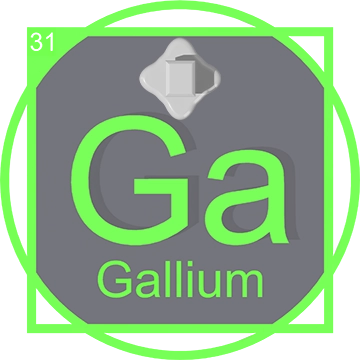Germanium (Ge): A Pivotal Element in Modern Technology
Introduction to Germanium
Germanium (Ge) is a fascinating element with the atomic number 32 on the periodic table. Known for its semiconducting properties, germanium plays a crucial role in various technological applications, from electronics to infrared optics. This article delves into the history, properties, and extensive uses of germanium in science and technology.
Discovery of Germanium

Germanium was discovered by the German chemist Clemens Winkler in 1886. The discovery was significant as it confirmed predictions made by Dmitri Mendeleev, who had previously forecasted the existence of this element in his periodic table. Winkler named the element after his homeland, Germany, thus embedding national pride in scientific achievement.
Germanium in the Periodic Table
Located in group 14 of the periodic table, germanium is a metalloid, which means it has properties intermediate between those of metals and non-metals. This positioning makes it incredibly valuable for its semiconductor properties, being used extensively in the semiconductor industry.
Properties of Germanium and it's Purest Form

Germanium is a lustrous, hard, grayish-white metalloid. It has a melting point of about 938°C and a boiling point of about 2833°C. Germanium is both ductile and brittle, making it unique for various industrial processes. It is primarily used in semiconductor devices due to its ability to efficiently respond to electrical signals.
Applications in Science and Technology
Germanium's impact on technology is vast and diverse. Here are a few key applications:

- Semiconductors: Germanium transistors and diodes are crucial components in radios, computers, and other electronic devices.
- Fiber Optic Systems: Due to its excellent refractive properties, germanium is used in fiber optic communication systems, enhancing data transmission capabilities across the globe.
- Infrared Optics: Germanium is transparent to infrared light, making it an essential material for infrared spectroscopes and thermal imaging cameras.
- Solar Cell Technology: Germanium serves as a substrate for the production of solar cells, contributing to renewable energy solutions.
Conclusion
From its discovery in the late 19th century to its extensive use in high-tech applications, Germanium remains a vital element in both science and technology. Its unique properties and versatility make it a cornerstone in advancing modern technology.
How Germanium is Produced
Germanium is not found in its pure elemental form in nature but is extracted from minerals like germanite, argyrodite, and sphalerite. The extraction process typically involves a series of steps including mining, roasting ores to remove sulfur, and reducing germanium tetrachloride with hydrogen to produce pure germanium.
Mining Locations and Associated Resources

Significant mining locations for Germanium include China, Russia, and Canada. In these mines, germanium is often found alongside other valuable resources such as zinc, gallium, and silver.
One mine in particular is the Tsumeb Mine in Namibia - Historically, this mine was a significant source of Germanium, as it processed the mineral germanite, among others.
Current Applications of Germanium

Today, Germanium is predominantly used in fiber optics, infrared optics, and semiconductor technology. Its ability to pass infrared light makes it invaluable for devices like thermal imaging cameras, while its semiconductor properties are crucial for electronic components in computers and mobile phones.
The Future of Germanium

Scientific advancements may broaden the applications of Germanium significantly. Research is ongoing in areas such as solar energy, where germanium's efficiency in converting light into electricity could lead to more effective solar panels. Additionally, its role in quantum computing and other high-tech fields is being explored, potentially revolutionizing technology and communication.













